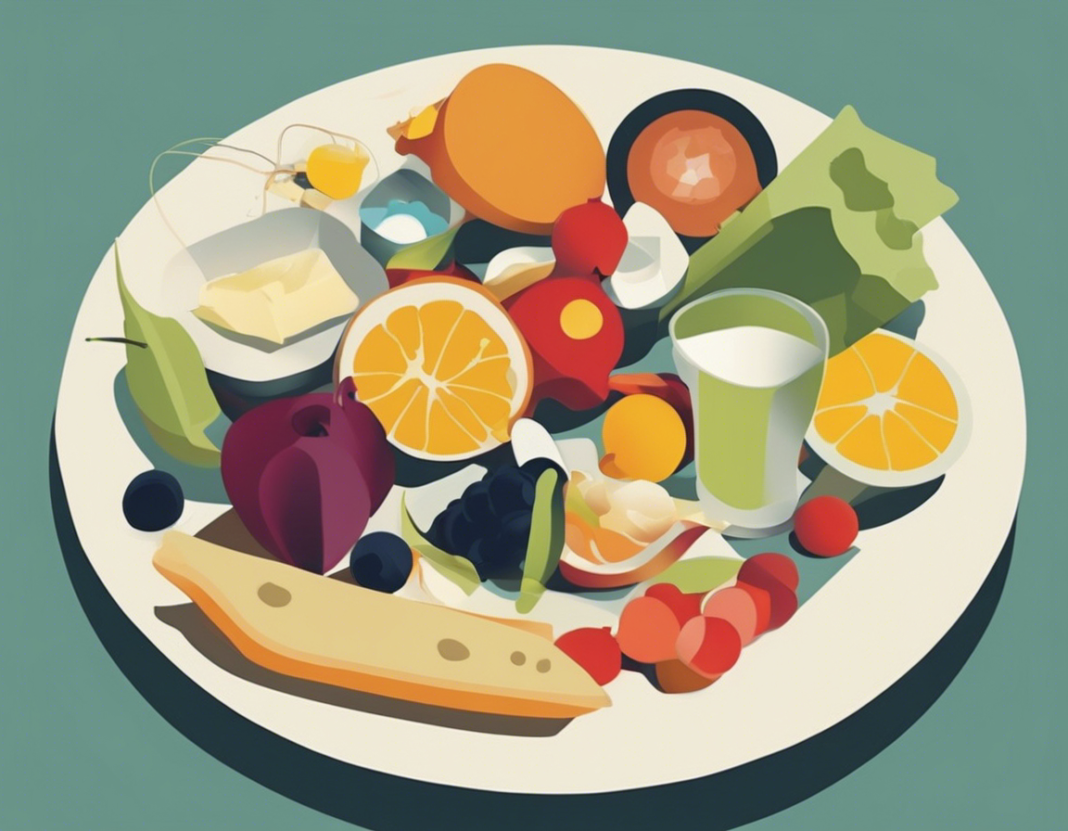The Bottom Line:
- Eating inorganic strawberries may expose you to high pesticide levels, compromising the fruit’s organic benefits.
- Bananas may reduce the benefits of other fruits like blueberries due to an enzyme that degrades polyphenols.
- Whole grain bread’s labeling can be misleading, as most store-bought options lack the intact grain’s nutritional value.
- Canned soups often contain high sodium levels and preservatives, emphasizing the importance of homemade alternatives.
- Avoiding artificial dyes in food can prevent potential health risks such as hyperactivity and immunosuppression.
Inorganic Strawberries and Pesticides
Concerns About Inorganic Strawberries and Pesticides
Recent studies have highlighted alarming findings about inorganic strawberries and the presence of pesticides in them. One study involved extracting juice from inorganic strawberries only to discover significant pesticide levels, enough to be reused for crop spraying. This raises concerns about the potential health risks associated with consuming such produce.
Reconsidering Food Choices based on Scientific Evidence
It is essential to evaluate our food choices based on scientific evidence to ensure optimal health outcomes. While specific studies may lead to reassessing certain foods, it is crucial to approach such information critically and consider alternative options that align with nutritional recommendations.
Potential Risks of Consuming Bananas in a Certain Context
A recent revelation by nutrition expert Rhonda Patrick sheds light on the impact of bananas in altering the bioavailability of polyphenols, particularly when combined with other beneficial ingredients like blueberries. While bananas are nutritious on their own, their enzymatic properties may counteract the benefits of certain compounds in mixed smoothies.
Furthermore, the timing and composition of meals, such as adding bananas to smoothies, can inadvertently diminish the intended nutritional benefits, emphasizing the need for informed dietary choices.
Bananas and Polyphenol Degradation
The Impact of Bananas on Polyphenol Degradation
Recent research has shed light on the potential negative effects of bananas on polyphenol degradation. Bananas contain an enzyme called polyphenol oxidase, which has been found to degrade polyphenols when consumed together with other beneficial ingredients such as blueberries. A human study revealed that adding bananas to berry smoothies, particularly those containing blueberries, resulted in significantly lower levels of polyphenol metabolites in the plasma of individuals compared to those who consumed the smoothie without bananas.
Understanding the Nutritional Properties of Bananas
It is important to clarify that bananas are inherently nutritious and not necessarily harmful on their own. While some may criticize bananas for their relatively higher calorie content compared to other fruits, they are still a valuable source of essential nutrients. However, when it comes to maximizing the health benefits of certain compounds like polyphenols found in other fruits, caution should be exercised in combining bananas with these ingredients to avoid potential degradation of valuable nutrients.
Optimizing Dietary Choices
To ensure that you reap the full nutritional benefits of your food choices, it is crucial to be mindful of how different ingredients interact in your meals. Being aware of enzymatic properties like polyphenol oxidase in bananas can help you make informed decisions when preparing mixed dishes or beverages. By understanding the potential impact of certain foods on nutrient absorption and bioavailability, you can tailor your dietary choices to optimize your overall health and well-being.
Misconception About Whole Grain Bread
Debunking the Whole Grain Bread Misconception
There is a prevalent misconception surrounding whole grain bread that all types labeled as “whole grain” are genuinely beneficial for health. The truth is far more complex than what meets the eye on a bread label. While whole grains are lauded for their dietary fiber content, the reality in the supermarket is often quite different.
When whole grains are pulverized into fine particles to create bread, the original integrity and nutritional value of the grains are compromised. This process leads to rapid starch digestion upon consumption, resulting in a quick release of glucose and subsequent insulin spikes. Such fluctuations in blood sugar levels can contribute to chronic metabolic issues over time, contrary to the intended health benefits of whole grains.
Distinguishing Between Genuine Whole Grain Bread and Processed Varieties
Authentic whole grain bread retains the husk of grains intact, serving as an effective delivery system for dietary fiber that promotes gut health by feeding beneficial bacteria further down the intestine. On the flip side, commercially processed whole grain bread undergoes extensive milling, which diminishes the nutritional quality and hampers the gradual breakdown of grains for sustained energy release.
It’s crucial for consumers to exercise caution when selecting whole grain products, ensuring they opt for minimally processed varieties that uphold the integrity of the grains to maximize health benefits and mitigate potential metabolic risks associated with refined carbohydrates.
Avoiding Artificial Dyes for Long-Term Health
Understanding the Risks of Artificial Food Dyes
Artificial dyes, often seen as vibrant colors in processed foods, can have detrimental effects on long-term health. These synthetic additives, labeled with numbers like Red 40 or Yellow 5, may enhance the visual appeal of food but offer little nutritional value. Studies have suggested that artificial dyes can lead to increased hypersensitivity and hyperactivity in children, raising concerns about their overall impact on health.
Furthermore, these dyes have been associated with immunosuppressive effects and potential carcinogenic risks, even at supposedly safe levels. It’s essential to scrutinize food labels and avoid products containing artificial dyes to safeguard your well-being and that of your family members, especially in the context of their long-term consumption.
Making Informed Choices for Long-Term Health
When selecting foods, prioritizing natural, minimally processed options is crucial for sustained well-being. Farm-raised salmon colored with artificial additives to mimic the appearance of wild-caught salmon illustrates the importance of understanding how food sources and production methods can impact our health.
By opting for whole, unadulterated foods and being mindful of potential additives like artificial dyes in our diet, we can promote better health outcomes over time. Choosing foods that align with nature’s intentions and avoiding unnecessary synthetic components can contribute to a healthier lifestyle in the long run.
Farm Raised Salmon and Coloring Concerns
Farm Raised Salmon and Ethical Concerns
When it comes to selecting salmon for consumption, the distinction between farm-raised and wild-caught salmon becomes crucial. Farm-raised salmon often undergo a process of coloring to mimic the appearance of wild-caught salmon. The natural color of farm-raised salmon is notably pale, almost white, which prompts the addition of food colorings to their feed to achieve a more desirable hue. This practice raises ethical concerns about the artificial manipulation of the salmon’s appearance and the potential implications for consumers.
Evaluating Fish Sources for Optimal Nutrition
Consumers are advised to prioritize obtaining fish from natural sources to ensure optimal nutritional benefits. Wild-caught salmon is generally considered a healthier option compared to farm-raised salmon due to its natural diet and lower exposure to artificial additives. Understanding the origin and production methods of the fish we consume is essential in making informed dietary choices that promote both personal health and environmental sustainability.





